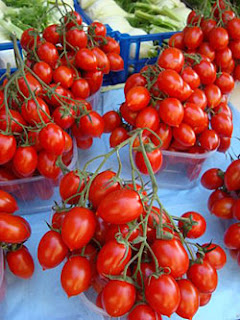Hooligan Hollow Farm
by Shannon Hutcheson
My aunt has never taken to anything
cautiously; she takes everything to the extreme! It was of little surprise to
those who know her that she adopted the 10 children she fostered, it was
slightly more shocking that she decided to home school them but it COMPLETELY
shocked me that she wanted to move her family into a life of sustainability.
Feeding a family of 12 is no easy
task. Tips to the grocery store can be taxing on your checking account and
frustrating if you are trying to accommodate allergies and sensitivities. The
average monthly grocery bill is upwards of $1600. Most of the items purchased
at the store can be grown or raised in your backyard. So, my aunt contacted me.
Our goal with Hooligan Hollow Farm
is to make the Hooligan family 100% sustainable within ten years. We are
starting with a fairly large undertaking: clear a quarter of an acre of land,
build a chicken coop/rabbit pen and install rain barrels wherever possible to
catch the remainder of our winter and spring rains. These tasks will all be
part of our first phase of farming.
Considering the size of the task at
hand I have allowed one month to complete the first phase of the project. The
construction of the chicken coop/ rabbit pen is coming along nicely, we should
have a complete product by the end of the week. The quarter of an acre has been
cleared and tilled; all that is left is raking it all down and planting. We
have also constructed a composting ditch that is 100 feet long, 4 feet wide and
3 feet deep. All that is left is constructing an edible landscape in the front
yard of the house, installing the rain barrels and finding an additional water
source for the main garden.
In
this process we have upcycled as many products that we can find. We are turning
pallets into vertical planters for lettuces; someone gave us the windows from
their house after they had them replaced that will be turned into an upcycled
greenhouse, the frame will be constructed out of wood from a neighbors torn
down porch; and we are using tires from the local tire shop to grow potatoes,
onions and garlic. We are trying to keep our footprint low, our products local
and our gardening methods earth friendly and sustainable.
This year will be a year of trial and errors, heartaches and
triumphs but we are all prepared for what is to come. We have a family of 12
committed to being self-sustaining and to simply be good stewards of the earth.
SustainaScapes venture into farming has been exciting. Please follow us through
our journey to create a legacy of local, sustainable food for Birmingham.
https://www.facebook.com/sustainascapes
https://www.facebook.com/hooliganhollow







